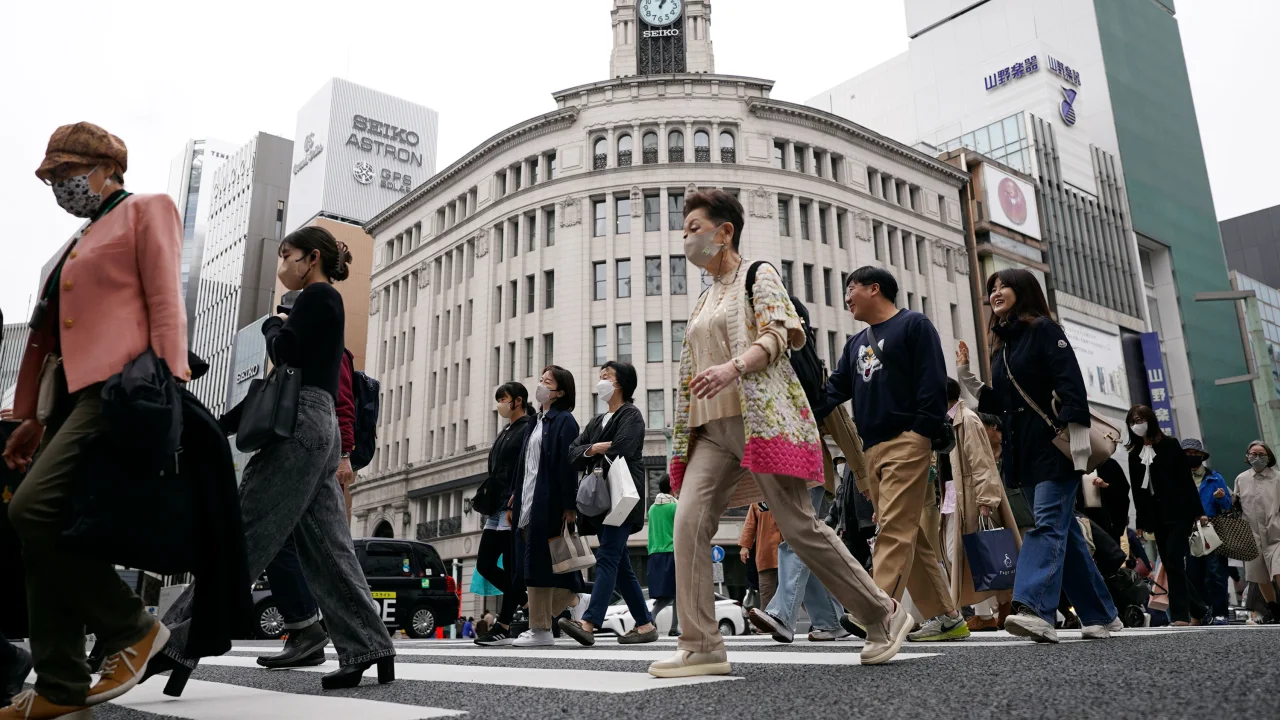In a surprising turn of events, Japan ‘s economy has displayed remarkable growth during the April to June period, outperforming initial forecasts. The boost in economic activity can be attributed to robust auto exports and a notable influx of tourists, which helped counterbalance the adverse effects of a sluggish post-Covid consumer recovery. However, despite these positive developments, the global economic outlook remains uncertain due to looming recession concerns.
Impressive Growth Figures Defy Expectations
Japan’s economy achieved an annualized growth rate of 6.0% during this period, resulting in a substantial quarterly expansion of 1.5%. This growth rate significantly surpassed the median projection of 0.8% from a Reuters poll, contributing to a record high in the country’s gross domestic product (GDP). This fast enlargement is the maximum high-quality for the reason that very last zone of 2020, following a revised 3.7% growth in the preceding January to March period.
Mixed Signals Mask Underlying Weakness
While the headline GDP figures offer a diploma of remedy for policymakers, there stays an underlying weak point inside the family sector. Marcel Thieliant, the pinnacle of Asia-Pacific at Capital Economics, cautions that the export-pushed momentum in increase is not likely to be sustainable. Despite a rebound in capital items exports and the relief of vast distant places funding declines, a full of life recuperation isn’t anticipated.
Household Consumption Faces Challenges
Private consumption, constituting over half of Japan’s economy, experienced a 0.5% decline quarter-on-quarter during the April-June interval. This contraction may be attributed to fee hikes impacting the income of meals and family appliances. This setback in consumption was accompanied by the noteworthy expansion of exports, particularly in the automobile sector and the rise in inbound tourism, while capital expenditure remained stagnant.
Automakers and Export Trends
The weaker yen has proven advantageous for Japanese automakers, bolstering profits amidst declining sales in China and the challenging transition towards electric vehicles. Furthermore, strong demand from the US and Europe has provided crucial support for the country’s exports. The post-Covid surge in foreign tourism has also injected a much-needed boost into the economy.
Net Exports Surge Amid Import Decline
The surge in external demand, commonly referred to as net exports, contributed a substantial 1.8 percentage points to the second-quarter growth. This increase was influenced by the remarkable growth in exports and a decline in imports for the third consecutive quarter. However, this net contribution was amplified by the struggles of imports due to the depreciation of the yen. On the domestic front, demand exerted a minor negative impact on growth, shaving off 0.3 percentage points.
Subdued Recovery Signals Central Bank’s Prudence
Although the positive growth figures were partly propelled by declining imports, experts caution against viewing this as a sign of a robust Japanese economic recovery. Takumi Tsunoda, a senior economist at Shinkin Central Bank Research Institute, emphasizes that the crucial financial institution will likely maintain its current monetary policy and adopt a wait-and-see approach, recognizing the potential fragility of the recovery.
Positive Signals Amid Challenges
For the first time in seven quarters, real wages in Japan turned positive, indicative of a slight improvement in the economic landscape. Additionally, the corporate appetite for investment remained strong, a positive signal according to Economy Minister Shigeyuki Goto. However, Goto underscores the necessity for caution, considering potential downside risks arising from the global economy and the impact of price hikes.
Bank of Japan’s Strategic Moves
In response to these shifting economic dynamics, the Bank of Japan recently took measures to permit long-term interest rates to rise further. This strategic move, interpreted by analysts as the beginning of a gradual departure from extensive monetary stimulus, reflects the bank’s careful calibration of its policy approach.
In conclusion, Japan’s economy has surprised experts with its vigorous growth during the April to June period, fueled by robust auto exports and an upswing in tourism. While these positive figures offer optimism, they also mask underlying vulnerabilities in the household sector and broader uncertainties in the global economy. As Japan navigates this intricate landscape, policymakers remain cautious, and the Bank of Japan’s strategic adjustments signify a prudent response to the evolving economic landscape.



